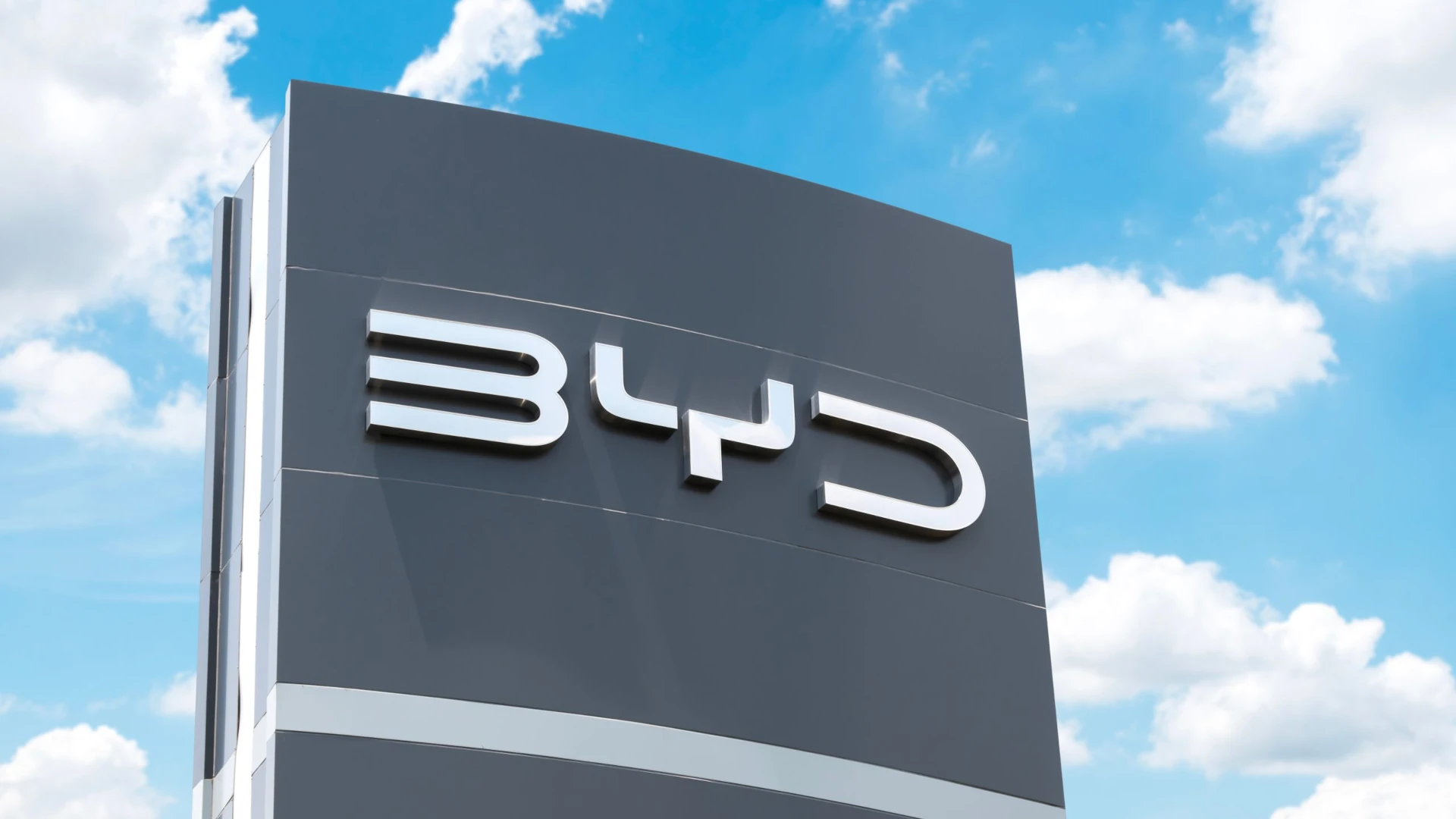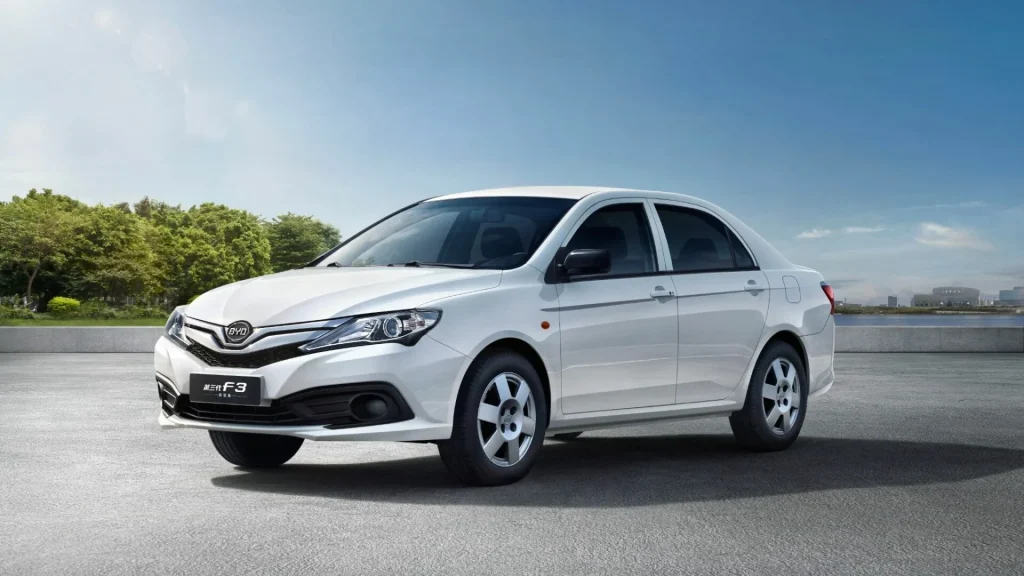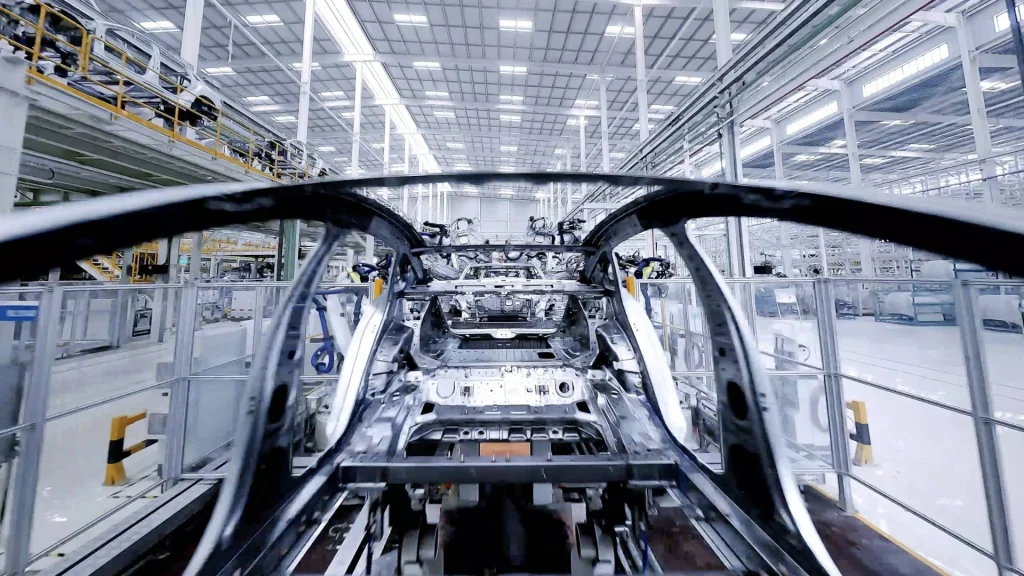BYD Auto, a subsidiary of the tech giant BYD Company Ltd., has a fascinating history that reflects the rapid evolution of the Chinese and global automotive industry. Founded in 2003, the company quickly became one of the largest electric vehicle manufacturers in the world, showcasing China’s potential in automotive innovation and leading the global transition to sustainable mobility.
Over two decades, BYD transformed from a small battery manufacturer into a multinational conglomerate, challenging expectations and redefining what is possible in the automotive industry. Its journey is marked by constant innovation, long-term vision, and an unwavering commitment to sustainability.
How Did It Start?
BYD, an acronym for “Build Your Dreams,” began operations in 1995 as a manufacturer of batteries for consumer electronics. Founded by Wang Chuanfu, a visionary chemist, the company quickly made a name for itself in the rechargeable battery market, establishing a reputation for quality and innovation.
Entering the automotive market in 2003 marked a new era for the company. This strategic decision was driven by Wang Chuanfu’s vision that the future of transportation would be electric. BYD leveraged its battery expertise to position itself at the forefront of the electric vehicle revolution, a movement that was just beginning in the early 2000s.
BYD’s transition to the automotive industry was not without challenges. The company faced initial skepticism from both domestic and international markets regarding its ability to compete with established automakers. However, the determination of its leaders and a focus on cutting-edge technology allowed BYD to overcome these initial doubts.
Launch and Initial Expansion
BYD Auto launched its first model, the F3 sedan, in 2005 at the Shanghai Auto Show. This event marked the official entry of the company into the competitive Chinese automotive market. The F3, although initially a conventional combustion vehicle, was designed with the vision of future electric and hybrid versions.
The launch of the F3 was accompanied by an aggressive marketing strategy and competitive pricing. BYD capitalized on the growing Chinese automotive market, which was experiencing an unprecedented boom in the early 2000s. The company initially focused on providing affordable vehicles for the growing Chinese middle class.
Initially focused on the domestic market, BYD quickly expanded its operations to other Asian countries. The company established strategic partnerships and began attending international auto shows, gaining global recognition. In 2008, BYD showcased its first models at the Geneva Motor Show, signaling its international ambitions.
Expansion into Europe and North America followed in the subsequent years. BYD adopted a cautious approach in these markets, initially focusing on niches such as electric taxi fleets and buses before entering the personal automobile retail market.
Reception by Critics and Public
BYD’s early models were met with a mix of curiosity and skepticism. Many praised the company’s ambition to produce affordable electric vehicles, recognizing the potential to democratize electric mobility. The specialized press highlighted BYD’s technological innovation, particularly regarding its batteries.
However, others questioned the quality and reliability of the cars. Critics pointed to initial issues with finish and design, unfavorably comparing BYD’s early models to those of more established manufacturers. These early criticisms were a significant challenge for the brand, struggling to establish credibility in the global market.
BYD’s persistence in improving its products gradually earned the trust of consumers. The company heavily invested in quality control and design, resulting in significant improvements with each new generation of vehicles. Feedback from customers and critics was taken seriously, leading to constant updates of existing models.
A turning point in public perception occurred with the launch of more sophisticated models, such as the e6 and, later, the Han. These vehicles demonstrated that BYD could compete not only on price but also in quality and technology with established international brands.
Evolution Over the Years
BYD invested heavily in research and development, resulting in significant advancements in battery technology and electric vehicle design. An important milestone was the launch of the BYD F3DM in 2008, the world’s first mass-produced plug-in hybrid car. This launch positioned BYD ahead of many global competitors in the race for alternative energy vehicles.
The development of lithium iron phosphate (LFP) battery technology was another crucial advancement. These batteries offered greater safety and durability compared to conventional lithium-ion batteries, becoming a competitive advantage for BYD.
Over the years, BYD expanded its product line to include a wide range of vehicles, from urban compact cars to luxury SUVs. The company also diversified into other transportation sectors, including electric buses, trucks, and even monorails, applying its battery technology and electric propulsion across various forms of mobility.
BYD’s evolution was also reflected in its design. From initial models that were often criticized for being derivative, the company began to develop its own distinctive design language. This was exemplified by the launch of vehicles like the Tang SUV and the Han sedan, which received acclaim for their sophisticated and contemporary design.
[Insert photo: BYD F3DM, the first mass-produced plug-in hybrid]
Consumption and Efficiency
The company focused on continually improving the energy efficiency of its vehicles. The development of the Blade battery, introduced in 2020, represented a technological leap, offering higher energy density and improved safety. This innovation allowed BYD to create vehicles with competitive ranges and reduced charging times.
BYD did not limit itself solely to battery efficiency. The company worked on optimizing the entire electric powertrain, developing more efficient electric motors and advanced energy management systems. This resulted in vehicles that not only offered greater range but also better performance and reduced operating costs.
The efficiency of BYD vehicles also extended beyond energy consumption. The company implemented advanced kinetic energy recovery technologies, optimized air conditioning systems, and lightweight materials to improve the overall efficiency of its vehicles. This translated into tangible benefits for consumers, such as reduced maintenance costs and longer component lifespans.
Furthermore, BYD invested in smart charging solutions and infrastructure. The company developed fast charging stations and bidirectional charging technologies, enabling its vehicles not only to consume energy but also to return it to the power grid when needed.
Market Impact and Legacy
BYD has played a crucial role in democratizing electric vehicles in China and beyond. Its strategy of offering electric cars at competitive prices helped accelerate the adoption of clean energy vehicles on a global scale. The impact of BYD extended beyond its own sales, influencing the entire automotive industry to speed up its electrification plans.
In China, BYD was instrumental in transforming the country into the largest electric vehicle market in the world. The company worked closely with the Chinese government, aligning with policies that promote new energy vehicles and contributing to the establishment of standards and regulations for the industry.
Globally, BYD challenged the perception that quality electric vehicles could only come from established Western manufacturers. The company proved that a Chinese brand could not only compete but lead in technology and innovation in the global automotive sector.
BYD’s legacy also extends to its influence on the automotive supply chain. The company vertically integrated its production, manufacturing not only vehicles but also key components like batteries and semiconductors. This approach not only ensured quality control but also helped reduce costs and accelerate innovation.
Sales and Popularity
BYD’s sales have grown exponentially over the years. In 2022, the company surpassed Tesla as the largest electric vehicle manufacturer in the world in terms of quarterly sales, marking a historic moment for the Chinese automotive industry.
This growth was not linear. BYD faced significant challenges, including a reduction in government subsidies for electric vehicles in China and intense competition from both traditional manufacturers and new electric vehicle startups. However, the company managed to navigate these turbulent waters through a combination of continuous innovation, operational efficiency, and effective marketing strategies.
BYD’s popularity extended beyond the consumer market. The company secured significant contracts to supply electric buses and other commercial vehicles to cities worldwide, from Los Angeles to London. These contracts not only boosted sales, but also helped establish BYD’s credibility in international markets.
BYD’s marketing strategy evolved over the years. From an initially price and practicality-focused approach, the company began emphasizing advanced technology, sophisticated design, and the environmental benefits of its vehicles. Innovative marketing campaigns, including partnerships with celebrities and influencers, helped elevate the brand profile, especially among younger consumers.
Influence on Design and Technology
BYD not only followed trends but also created them. Its commitment to innovation resulted in futuristic designs and advanced technologies such as the cell-to-pack battery system and the e-Platform 3.0 chassis, which influenced the entire industry.
The design of BYD vehicles has evolved significantly over the years. From initial models that were often criticized for mimicking Western designs, the company developed its own visual identity. This was particularly evident in models like the Han and the Tang, which featured elegant lines and distinctive details that set them apart in the market.
BYD’s influence on design extended beyond external aesthetics. The company pioneered innovative interior concepts, integrating advanced infotainment technologies and driver assistance systems into intuitive and ergonomic layouts. The use of sustainable materials inside the vehicles also became a hallmark of BYD, influencing other manufacturers to adopt similar practices.
In the technology field, BYD set new standards in various areas. The company was one of the first to widely adopt lithium iron phosphate (LFP) batteries, which offer greater safety and durability. BYD’s Blade battery technology, which increases energy density and improves safety, was so successful that the company began supplying this technology to other automakers.
BYD’s e-Platform 3.0 represented a significant advancement in electric vehicle architecture. This integrated platform combines battery packs, electric propulsion systems, and electronic control in a compact and efficient design. This not only improved the performance and efficiency of BYD vehicles but also established a new industry standard for system integration in electric vehicles.
BYD also pioneered advanced charging technologies. The company developed fast charging systems and bidirectional charging technologies, allowing its vehicles not only to consume energy but also to return it to the power grid when necessary. This “vehicle-to-grid” (V2G) approach is at the forefront of smart grid and energy management technologies.
Curiosities and Interesting Facts
- Warren Buffett, through Berkshire Hathaway, invested in BYD in 2008, acquiring a 10% stake for $230 million. This investment not only provided a significant financial boost but also conferred international credibility to BYD at a crucial moment in its development.
- BYD has expanded its operations beyond cars, producing electric buses, trucks, and even monorails. The company has supplied electric buses to various cities around the world, including London, Los Angeles, and Santiago, Chile.
- In 2021, the company announced it would cease production of vehicles powered solely by combustion engines, focusing entirely on hybrids and electric vehicles. This bold decision positioned BYD at the forefront of the global transition to clean energy vehicles.
- BYD is not limited to land vehicles. The company has also developed electric boats and even a small electric airplane, demonstrating its commitment to electrifying all modes of transportation.
- The name “BYD” was inspired by an advertising slogan that founder Wang Chuanfu saw in Hong Kong: “Tender your BID.” He liked the sound of the word “BID” and decided to use it as the basis for the company’s name, changing it to “BYD” to represent “Build Your Dreams.”
- BYD is one of the few automotive companies in the world that produces its own semiconductor chips. This capability proved particularly valuable during the global chip shortage in 2021-2022, allowing BYD to maintain its production while many competitors faced shutdowns.
- In 2022, BYD launched its luxury brand YangWang, aiming to compete directly with European premium brands in the high-performance electric vehicle segment.
- The company has a strong presence in the battery market for mobile devices, supplying batteries for many popular smartphones and tablets, including some iPhone models.
- BYD was a pioneer in the large-scale use of lithium iron phosphate (LFP) batteries in electric vehicles. These batteries are known for their greater safety and durability compared to conventional lithium-ion batteries.
The history of BYD Auto is a testament to the rapid development of the Chinese automotive industry and the global transition to electric mobility. From a battery manufacturer to a global leader in electric vehicles, BYD has demonstrated that innovation, persistence, and long-term vision can transform not just a company but an entire industry.
BYD’s journey is marked by several significant milestones:
- The successful transition from battery manufacturer to automobile producer.
- The launch of the world’s first mass-produced plug-in hybrid.
- The development of proprietary battery technologies, such as the Blade Battery.
- The expansion into global markets and establishing a significant presence in electric commercial vehicles.
- Surpassing Tesla in quarterly electric vehicle sales in 2022.
Each of these milestones represents not only a success for BYD but also a step forward for the entire electric vehicle industry.
Future of BYD
The success of BYD Auto illustrates the potential of companies that embrace innovation and sustainability. As the world moves towards a future of clean energy, BYD is well-positioned to continue being a driving force in the electric vehicle revolution.
The story of BYD also highlights how quickly the automotive industry is evolving. In just two decades, the company has gone from a newcomer in the automotive sector to a global leader in electric vehicle technology. This serves as a reminder that, in the age of electric mobility, agility and innovation can be as important as heritage and tradition.
Looking ahead, BYD faces new challenges and opportunities. Competition in the electric vehicle market is intensifying, with traditional manufacturers and new startups entering the space. At the same time, BYD’s global expansion presents challenges in terms of adapting to different markets and regulations.
However, with its strong technological foundation, integrated production capacity, and commitment to innovation, BYD appears well-equipped to navigate these waters. The company is not just participating in the electric mobility revolution – it is helping to lead it.
As the global transition to electric vehicles continues to accelerate, BYD’s story serves as a fascinating case study of how a company can reinvent itself and lead a transformative change in an established industry. BYD’s legacy is likely to be felt far beyond the automotive sector, influencing our approach to sustainable mobility and clean technology in general.
More About BYD
- When was BYD Auto founded?
BYD Auto was founded in 2003 as a subsidiary of BYD Company Ltd., which was established in 1995. - What was the first car produced by BYD?
The first car produced by BYD was the F3 sedan, launched in 2005. - Does BYD produce only electric cars?
Currently, BYD focuses on electric and hybrid vehicles. In 2021, the company announced it would stop producing exclusively combustion vehicles. - How does BYD compare to other electric vehicle manufacturers?
In 2022, BYD surpassed Tesla in quarterly electric vehicle sales, becoming a global leader in this segment. - Where are BYD’s main factories located?
BYD’s main factories are located in China, headquartered in Shenzhen, but the company also has production units in other countries, including the United States, Brazil, and Hungary. - Who is the founder of BYD?
BYD was founded by Wang Chuanfu, a Chinese chemist and entrepreneur. - Does BYD produce its own components?
Yes, BYD is known for its vertical production, manufacturing many key components, including batteries and even its own semiconductor chips. - What are BYD’s main technological innovations?
Some of BYD’s main innovations include the Blade Battery, the e-Platform 3.0, and the large-scale development of lithium iron phosphate (LFP) batteries for electric vehicles. - Does BYD sell its vehicles outside of China?
Yes, BYD has been expanding its global presence, selling vehicles in several countries across Europe, Asia, South America, and North America. - Does BYD produce only passenger cars?
No, in addition to passenger cars, BYD produces a variety of commercial vehicles, including electric buses, trucks, and even monorails.
Author: Fabio Isidoro
Fabio Isidoro is the founder and editor-in-chief of Canal Carro, where he has been writing about the automotive world since 2022. Passionate about cars and technology, he began his journey on the HospedandoSites portal and today dedicates himself to creating technical content and comprehensive analyses of national and international vehicles. 📩 Contact: contato@canalcarro.net.br




